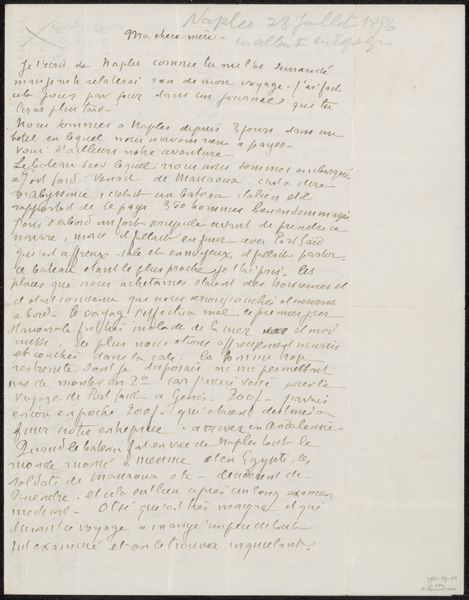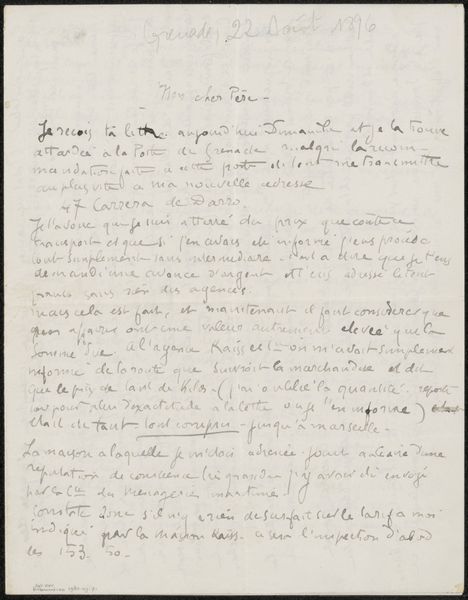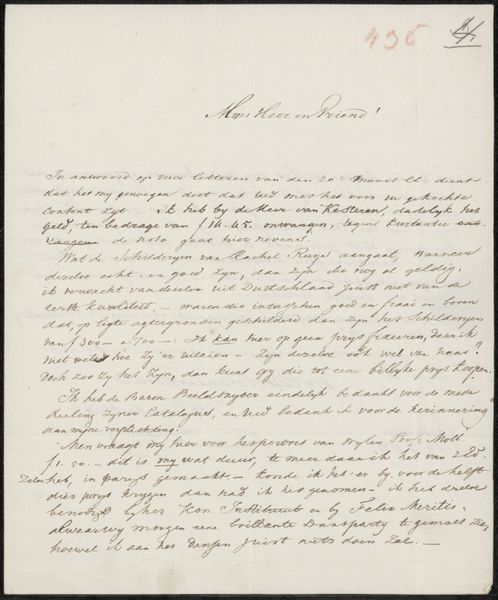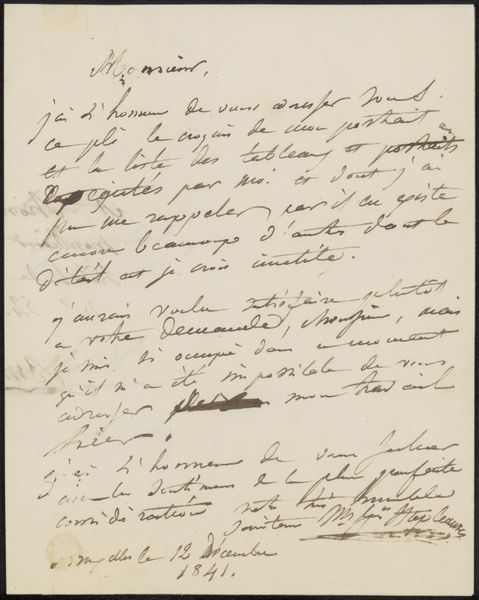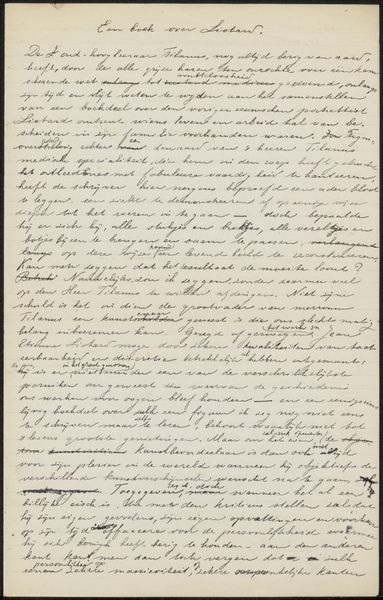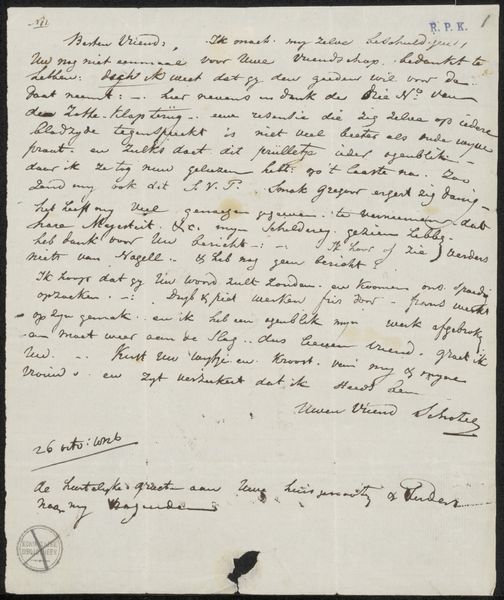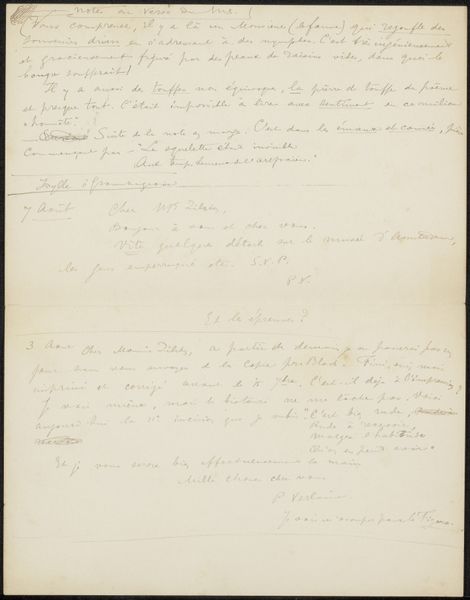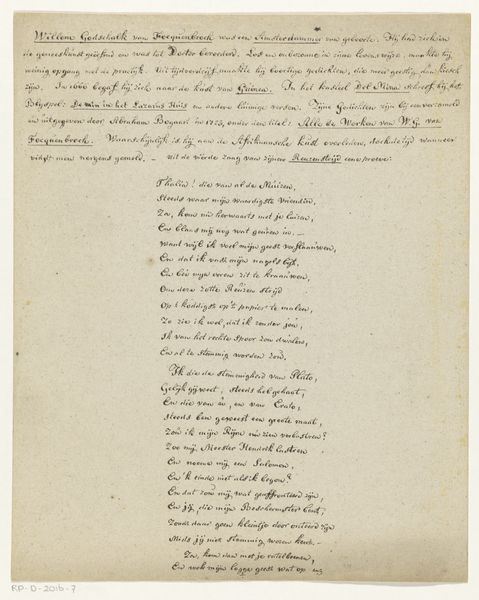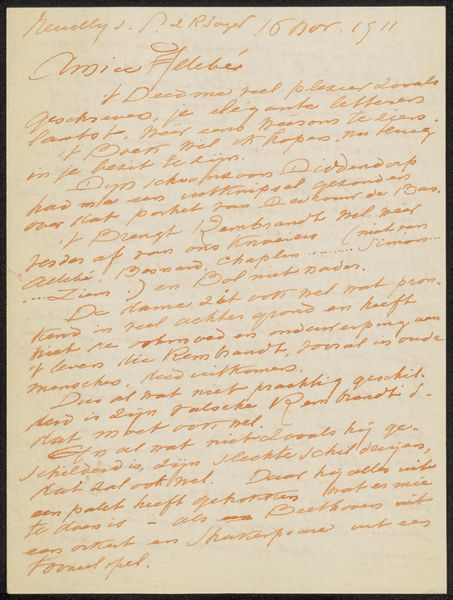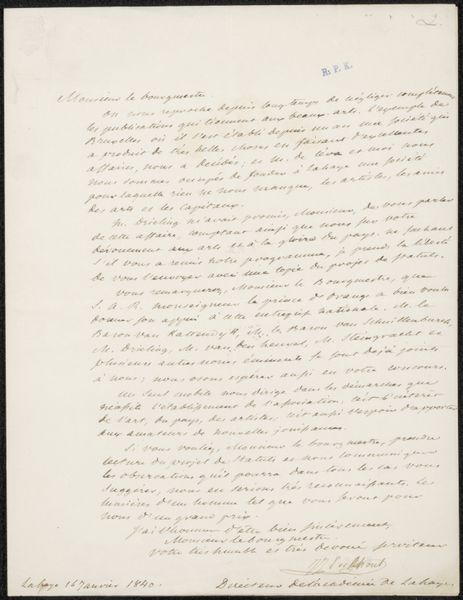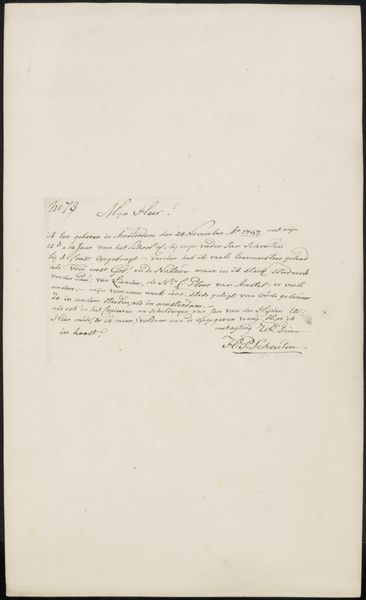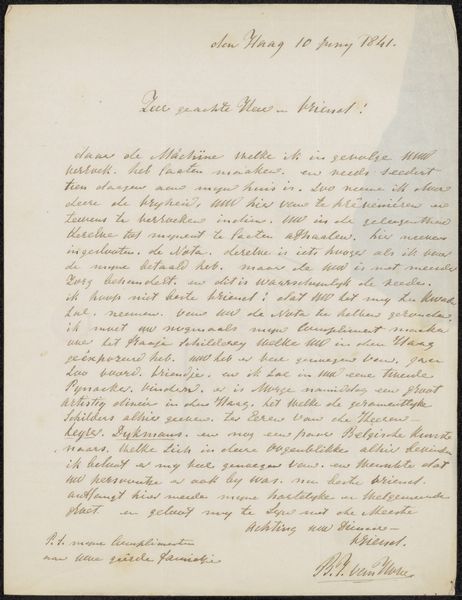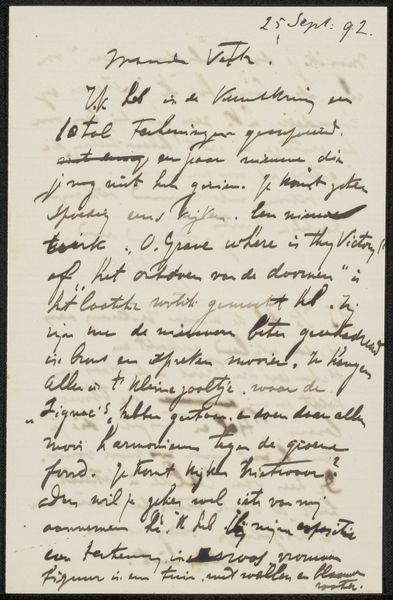
textile, paper, ink
#
textile
#
paper
#
ink
#
calligraphy
Dimensions: height 230 mm, width 200 mm
Copyright: Rijks Museum: Open Domain
Curator: This intriguing piece, "Gedicht op de Blokhuizen in de Amstel, 1651," a poem by Joost van den Vondel, rendered in ink on paper sometime between 1800 and 1863, seems almost like a historical document as much as it is an artwork, wouldn't you agree? Editor: It does. Seeing this handwriting, the poem itself becomes this tangible thing, but I'm not sure I'm quite grasping its significance beyond its pure aesthetic value. How do you interpret this work in terms of its historical context? Curator: The choice of calligraphy is itself a political act, a conscious decision to utilize traditional forms of writing to engage with contemporary issues. Considering that the poem is about the Blockhouses on the Amstel, fortifications built for defense, how do you see this text participating in broader cultural conversations of power, security, and civic identity? Editor: That makes sense. It feels like a deliberate act of preservation and commentary, situating a very specific historical moment, the building of the Blockhouses, within the broader narrative of Amsterdam's identity and perhaps even Dutch national identity. Almost like it is reinforcing ideas about who had power and who didn't at that point. Curator: Precisely. And when we think about the power dynamics inherent in the construction of these Blockhouses, who they were intended to protect and who they were meant to exclude, how does that inform our reading of the poem and its calligraphic presentation? What sort of statement is Vondel making about Amsterdam, or maybe even more broadly, about governance and control, through this particular aesthetic form? Editor: Wow, I never would have considered those issues, I think I'm beginning to get an idea of this work. I’ll never look at old manuscripts the same way again. Thanks so much! Curator: It works on multiple levels of artistic commentary, which make us conscious of both the event being narrated, the perspective being expressed, and the artistic rendering being deployed, I learned much from you too, many thanks.
Comments
No comments
Be the first to comment and join the conversation on the ultimate creative platform.
